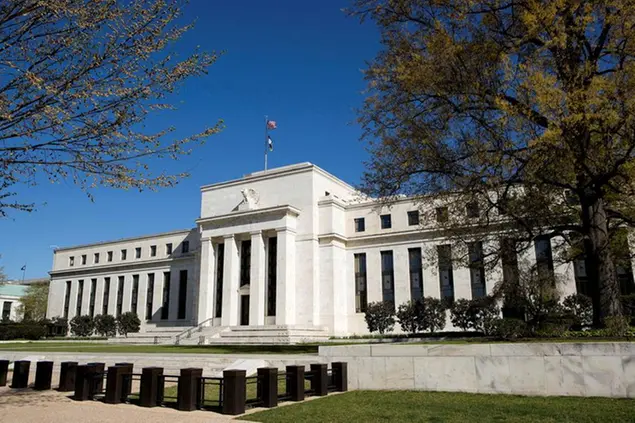PHOTO
Uncertainty over the size of an initial interest rate cut expected Wednesday from the Federal Reserve has sparked a related debate over the possibility of an accelerated halt to the central bank’s balance sheet drawdown.
Prospects for an opening cut of half a percentage point have been gaining ground over a smaller quarter-point reduction in rate futures markets, and if policymakers do go for the larger option and signal worry about the economic outlook, the runway for more quantitative tightening, or QT, could get much shorter.
QT is largely seen as a liquidity management tool and distinct from Fed interest rate policy focused on quelling inflation without inflicting too much pain on the labor market. But more aggressive interest rate cuts from the Fed might be seen at odds with tighter liquidity, depending on the reasons behind the rate cuts.
An imminent shuttering of QT would represent a major shift in the outlook for the central bank balance sheet. A survey of major banks from the New York Fed in July found firms predicting QT’s end in April of next year, as Fed officials have signaled they saw ample room to continue it.
“If they ease rates by 50 basis points, I think the decision about the balance sheet becomes more complex,” said Patricia Zobel, former manager of the New York Fed’s group that implements monetary policy and now head of macroeconomic research and market strategy at Guggenheim Investments.
“We do have some chance” of an earlier QT end if a larger cut is accompanied by concerns about the economy, Zobel said. For now, the former Fed official is anticipating a quarter-point cut and QT continuing on its current trajectory.
The Fed currently targets the fed funds rate in a 5.25% to 5.50% range.
Matthew Luzzetti, economist at Deutsche Bank, said a big rate cut joined with hints of more aggressive easing in the updated policymaker projections due on Wednesday as well would mean “there would be a conflict between reducing rates and continuing to run down the balance sheet, and they might not want that kind of mixed signal about their policy tools in that environment.” Bank of America analysts, meanwhile, agreed a half-point cut aimed at propping up the economy would bring a halt to QT relatively soon.
The heightened rate-cut uncertainty comes down to gauging whether the Fed will be lowering borrowing costs simply to normalize them given abating inflation, and some reckon a big reduction or two could still fit along that path. But the more salient risk to the QT outlook is if interest rate policy adjusts because of rising worries about the job market hitting stall speed.
LIQUIDITY STILL FLUSH
The clouded outlook for the balance sheet comes after the QT process just crossed the two-year mark. The Fed more than doubled the size of its holdings by the summer of 2022 via purchases of Treasury bonds and mortgage-backed securities, topping out at holdings of $9 trillion. The buying was aimed at smoothing unsettled markets and providing a lift for the economy beyond near-zero percent interest rates as the COVID-19 pandemic raged. The QT process kicked off as the Fed shifted to rate increases to quell inflation and officials decided excessive accommodation was no longer appropriate. The drawdown has clipped about $1.8 trillion from Fed holdings so far, and in May the Fed slowed what had been a targeted monthly drawdown of $95 billion to its current limit of $60 billion.
The Fed seeks to have enough liquidity in the financial system to allow for normal short-term rate volatility and firm control over the fed funds rate. So far, discussion around ending QT has largely centered around finding that sweet spot for liquidity.
QT "is not going to be adjusted until the Fed thinks that they've made the transition from abundant reserves to ample reserves," said William Dudley, who led the New York Fed until his retirement in 2018. "They don't know exactly where, when that's going to occur, but they are pretty confident they haven't gotten there yet," he said.
So far, QT has run squarely in the background. It has faded as a market mover because investors have already "built in" QT into longer-term borrowing costs, New York Fed President John Williams said.
Meanwhile, former St. Louis Fed leader James Bullard, now dean of Purdue University's business school, noted that at least for now, QT and interest rate policy are aligned and can remain so even with rate cuts.
"Even if you lower the policy rate somewhat, it will still be above everyone's estimate of neutral, so you'd still be running a restrictive monetary policy with respect to the policy rate, and that complements the quantitative tightening part of the policy," Bullard said.
When the funds rate gets to around neutral, Bullard said that would be time to consider ending QT to better align the two policy tools. Analysts at research firm LH Meyer said any move to a fed funds rate of 3% or lower would be by itself a trigger for ending QT.
(Reporting by Michael S. Derby; Editing by Dan Burns and Andrea Ricci)
